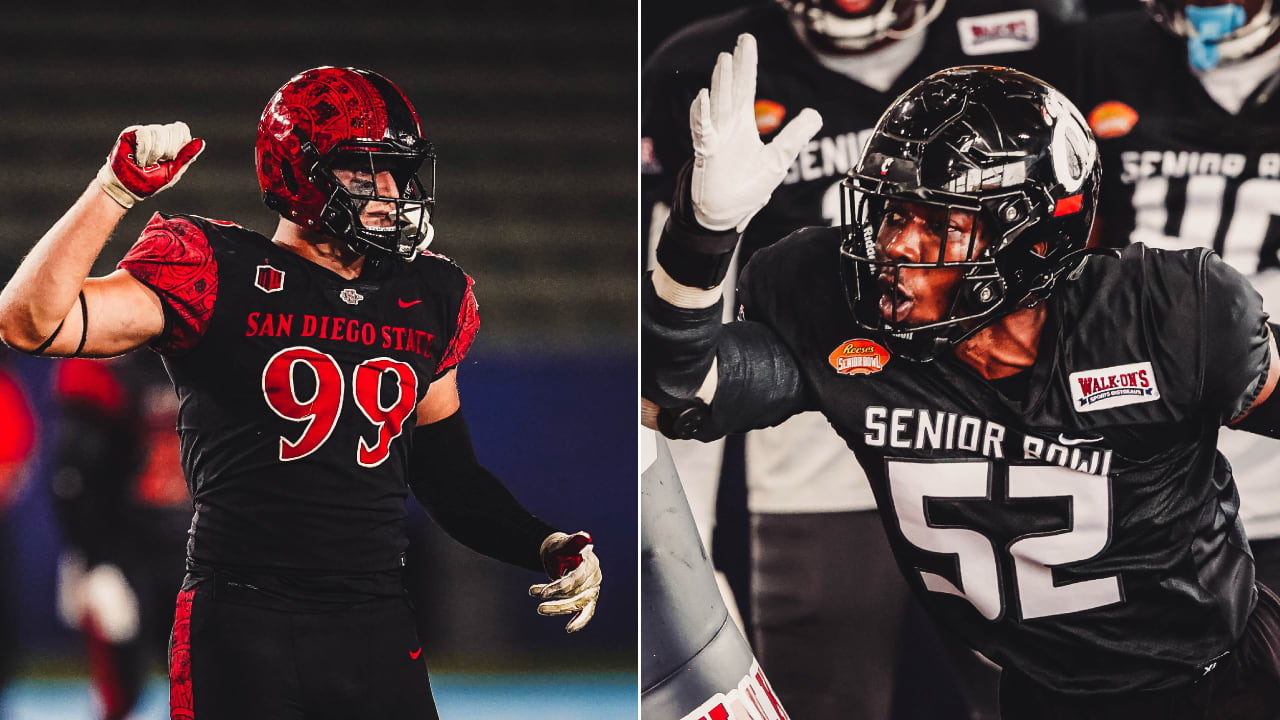Both players fit as outside linebackers, GM Steve Keim said.
Thomas had 10½ sacks and 20½ tackles for loss last season for the Aztecs after moving back out to his natural edge spot following his work as an interior defensive lineman earlier in his college career.
He can play both comfortably, Thomas said, but “I’m an edge rusher.”
Sanders, 6-5 and 248 pounds, had 2½ sacks and 7½ tackles for loss this season for the Bearcats, but he had more than 60 quarterback pressures. He is hoping to play at around 255 pounds – which was about what Jones played at when he was in Arizona.
Replacing Jones would be difficult for any player. Thomas wasn’t making any predictions. “I definitely want to go in there and give what I have every single day,” Thomas said. “We’ll go from there.”
As for Sanders, “I actually want to show I can fill that pass rush (need) at any given moment.”
Thomas is more NFL-ready, Keim said. Sanders has more upside. They join a pass rush group on the outside that includes Golden, Devon Kennard and Dennis Gardeck. The Cardinals sustained a good pass rush in 2020 even after Jones went down with a season-ending injury – they did have Haason Reddick at the time – through some gameplanning by defensive coordinator Vance Joseph.
“That year, VJ and the defensive staff did a great job of scheming things up and coming up with new pressures and ways to get home,” coach Kliff Kingsbury said. “I’m excited to add these two pieces to add depth to that room.”
Thomas said he’s modeled his game after Watt, and it’s possible he could find himself inside in the Cardinals’ 3-4 alignment like he was early in his college career. Keim said that could be a possibility at times.
“I needed to do what my team needed me to do,” said Thomas, who trained at EXOS in Phoenix with new teammate Trey McBride. “My junior season I was able to make the transition back out (to the edge) and I just felt most natural out there. I think that’s what really made me pop off this year.”
The Cardinals head into the third day of the draft Saturday without any picks in the fourth or fifth rounds. They have two picks in the sixth round and three in the seventh. There is potential for that to change.
“We always have some picks next year, some compensatory picks next year we’ll get, we have some ammo, but at the same time we’ll be smart about it,” Keim said. “If someone good stands out, we’ll be aggressive and go get them.”


